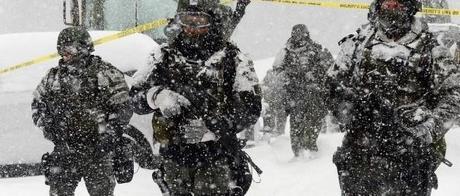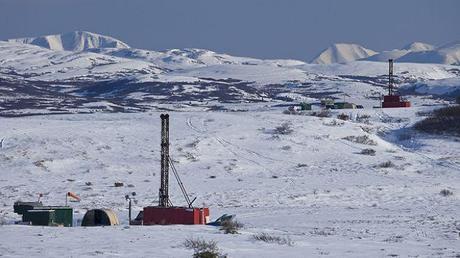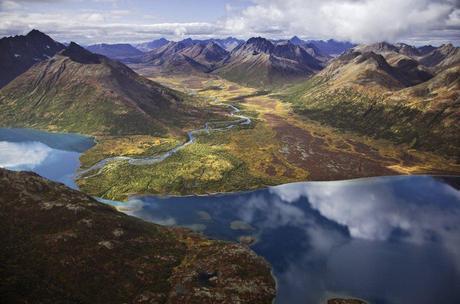
From Earth First! News
On a cold, overcast day in late August, dozens of operatives swarmed a gold mine in the small town of Chicken, Alaska. Wearing body armor and uniforms, the well armed operatives executed a carefully coordinated tactical intervention, moving in groups of between four and eight individuals to close down the mine quickly without injuring anybody. Who was responsible for this daring feat?
The AK Environmental Crimes Task Force claimed responsibility for the intervention, encompassing 10 state and federal law enforcement agencies. That’s right, even the EPA was involved. What? You didn’t know the EPA could carry guns?
Well, apparently they do. According to a Justice Department report, 40 government agencies, including nearly a dozen non-law enforcement related agencies, have armed squads. Together, they employ about 120,000 full-time officers authorized to make arrests and carry guns.

While the EPA denies that the operation was a raid, others have different opinions. “Imagine coming up to your diggings, only to see agents swarming over it like ants, wearing full body armor, with jackets that say POLICE emblazoned on them, and all packing side arms,” miner C.R. “Dick” Hammond told the Alaska Dispatch.
The militant approach on Chicken, Alaska, gold mine startled many, and has led many politicians and news outlets to question why the hell the EPA used such a militant approach for an investigation of a supposed violation of Section 404 of the Clean Water Act—particularly considering no arrests were made, nor citations issued.
Although Chicken is the first time the Newswire has ever confronted the EPA’s armed wing, it does open many questions. Chicken, Alaska, is across the state from the proposed Pebble Mine, an ecologically explosive issue currently tied up in the legislative process. The Pebble Mine would supposedly yield $500 billion in gold and copper, among other minerals, but it is also at the headwaters of Bristol Bay, where half of the world’s sockeye salmon are produced.

Locals are completely against the mine, but corporations want to begin mining as soon as possible. A study released by the EPA in April notes that 100 miles of stream and 4,800 acres of pristine wetlands would be destroyed. Click here to learn how to stop the Pebble Mine

